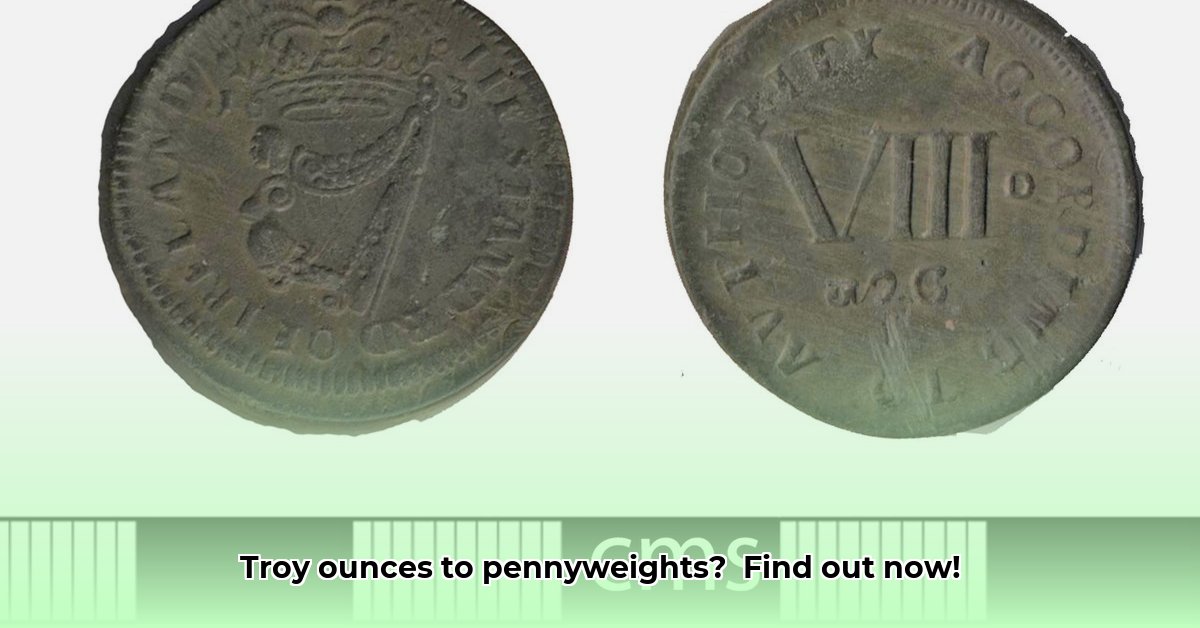
Understanding Troy Weight and Pennyweights
Troy weight, an ancient system, is primarily used to measure precious metals like gold and silver. Unlike the more common avoirdupois system (used for everyday items), troy weight uses different units, such as the troy ounce and the pennyweight. Accurate conversion between these units is crucial for anyone working with precious metals. This guide provides a clear and concise method for converting between these units, minimizing errors and ensuring accurate calculations.
Defining Troy Ounces and Pennyweights
A troy ounce (oz t) is a unit of mass in the troy weight system, approximately 31.103 grams. This is heavier than the standard avoirdupois ounce (approximately 28.35 grams), a distinction crucial for accurate calculations. The pennyweight (dwt) is a smaller unit within the troy system, with 20 pennyweights equaling one troy ounce. Jewelers often use pennyweights to measure smaller precious metal pieces.
Conversion Methods: Troy Ounces to Pennyweights
Here are three reliable methods for converting troy ounces to pennyweights:
1. Direct Multiplication: The simplest method involves multiplying the number of troy ounces by 20.
- Example: 5 troy ounces * 20 pennyweights/troy ounce = 100 pennyweights
2. Online Converters: Numerous reputable online calculators perform this conversion quickly and accurately. Using such tools minimizes the risk of manual calculation errors. Several trustworthy websites are available; always verify the source's reliability. A quick online search will readily provide several options.
3. Manual Calculation (for simple conversions): For simple conversions, the formula remains straightforward: Troy Ounces x 20 = Pennyweights
- Example (reverse calculation): 75 pennyweights / 20 pennyweights/troy ounce = 3.75 troy ounces.
Practical Applications and Real-World Examples
Accurate conversion between troy ounces and pennyweights is crucial in various applications:
- Jewelry Making: Jewelers use pennyweights to determine the precise amount of precious metal needed for a piece, directly influencing the piece's cost. Inaccurate conversions can lead to material waste or pricing errors.
- Precious Metals Trading: Inaccurate weight measurements can lead to significant financial losses or gains in large-scale precious metals transactions. Accurate conversions ensure fair and transparent dealings.
Minimizing Errors: Common Pitfalls to Avoid
Several common mistakes can lead to inaccurate conversions:
- Confusing Avoirdupois and Troy Ounces: Remember the key difference: a troy ounce is heavier than an avoirdupois ounce. Always double-check the units being used.
- Calculation Errors: Use a calculator for complex calculations and carefully check your work. A single misplaced decimal can significantly impact the final result.
- Insufficient decimal places: Calculations must use sufficient decimal places to maintain accuracy, particularly in high-value transactions.
Leveraging Online Tools for Accuracy
Online converters offer a quick and accurate solution. Always choose reputable websites, and for high-stakes transactions, double-check the result using multiple independent converters. Many reliable online conversion tools are readily available.
Conclusion: Mastering Precious Metal Conversions
Mastering the conversion between troy ounces and pennyweights is essential for anyone working with precious metals. By understanding the differences between troy and avoirdupois systems and employing reliable conversion methods, you can ensure accuracy and avoid costly mistakes. Remember to double-check your calculations, especially in high-value transactions.
Further Resources
While this guide covers fundamental aspects, further research into the history and nuances of troy weight can enhance your understanding. Search for "Troy Weight System History" for more detailed information.